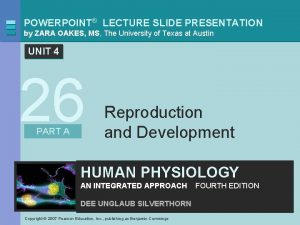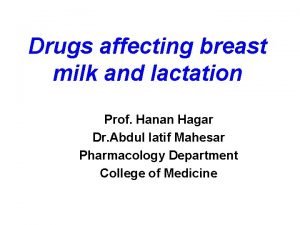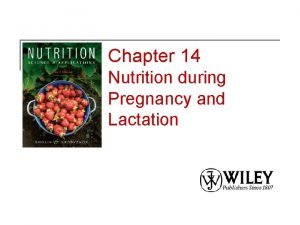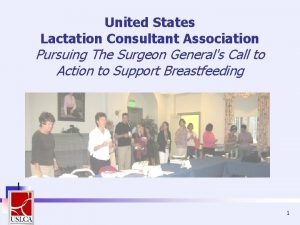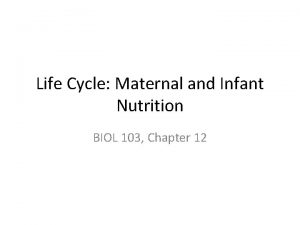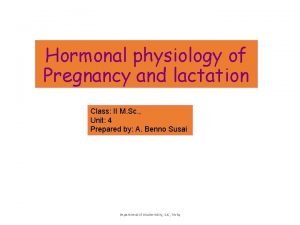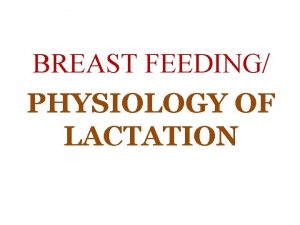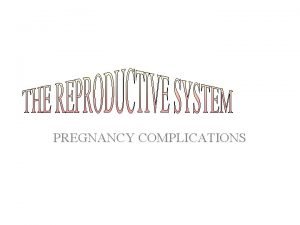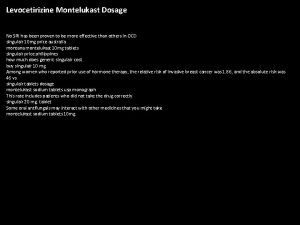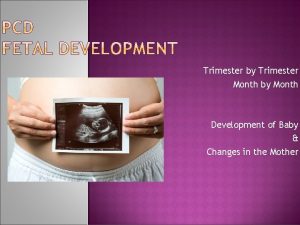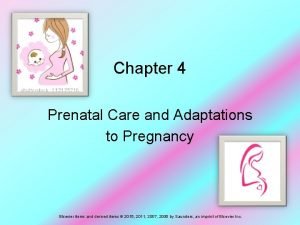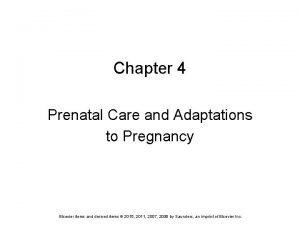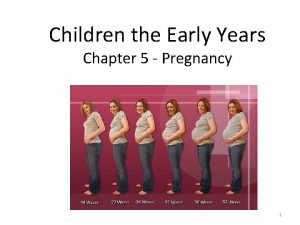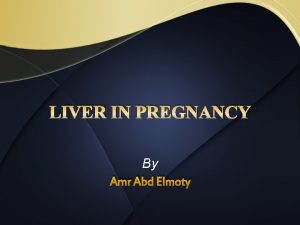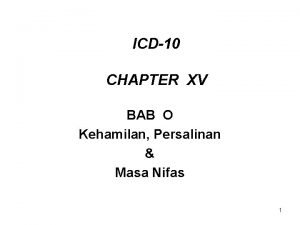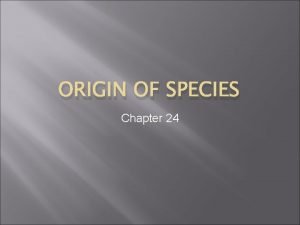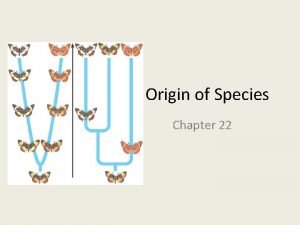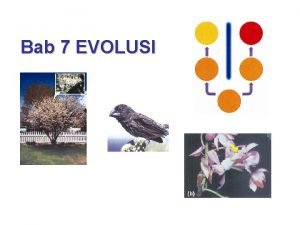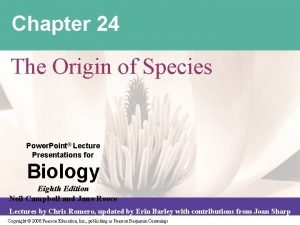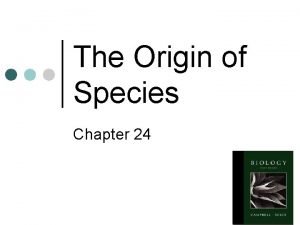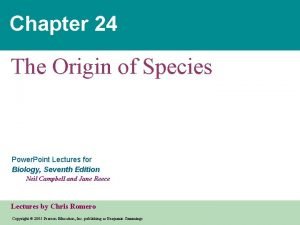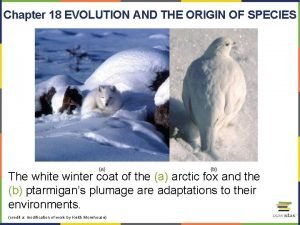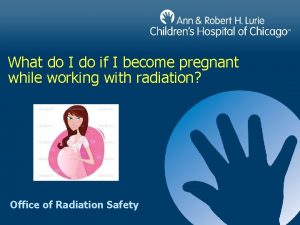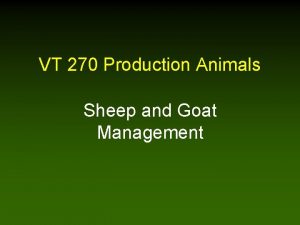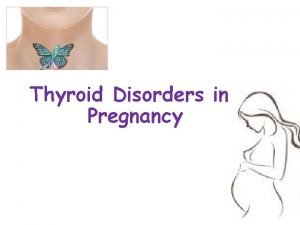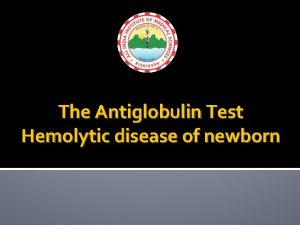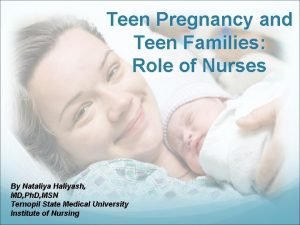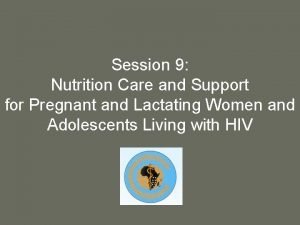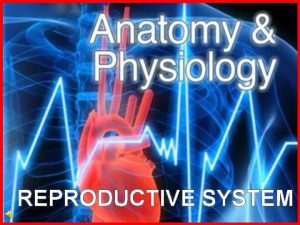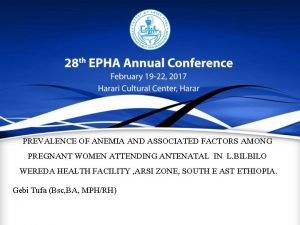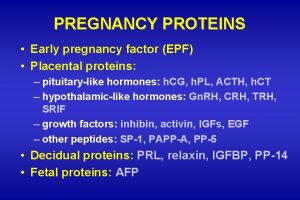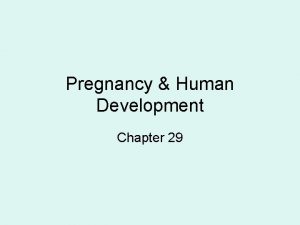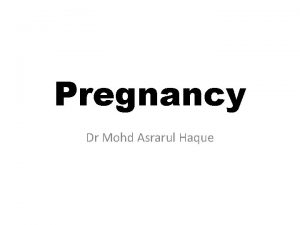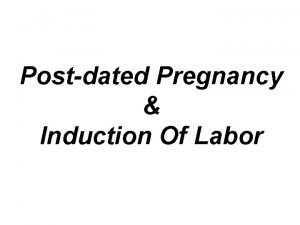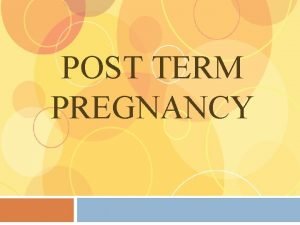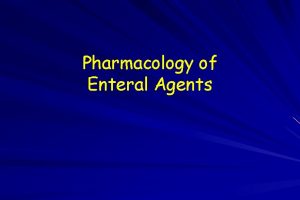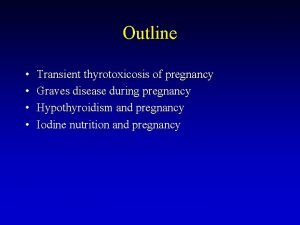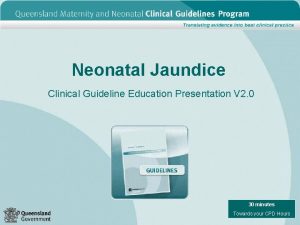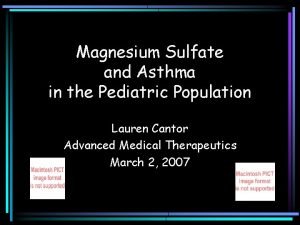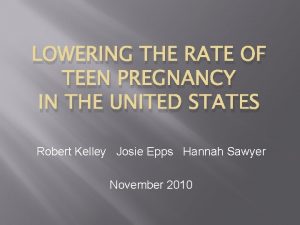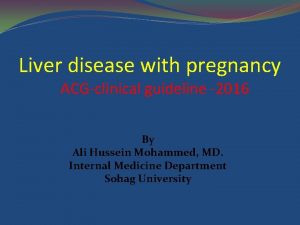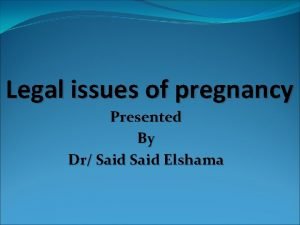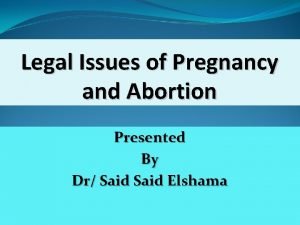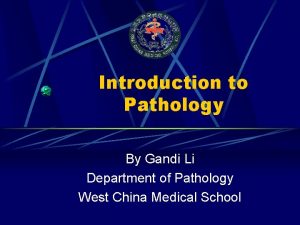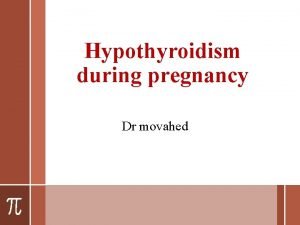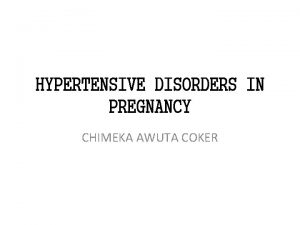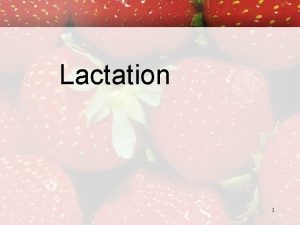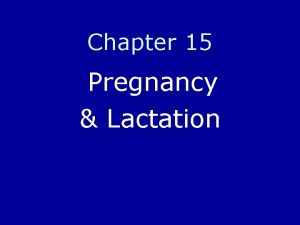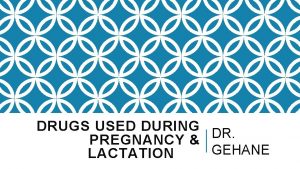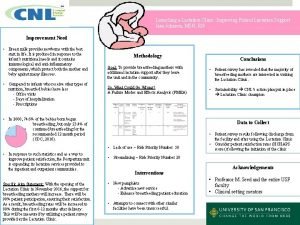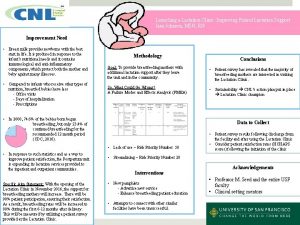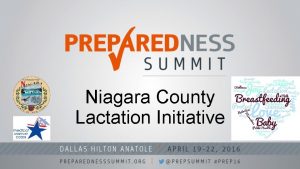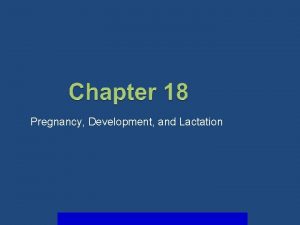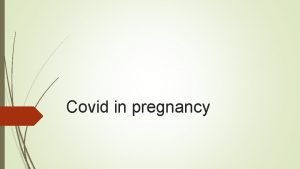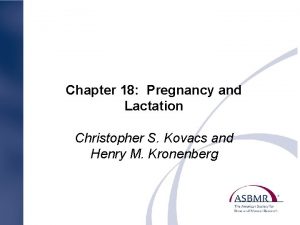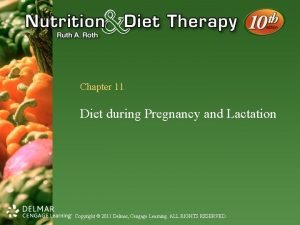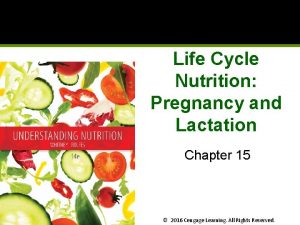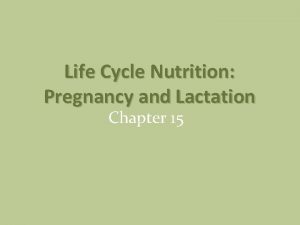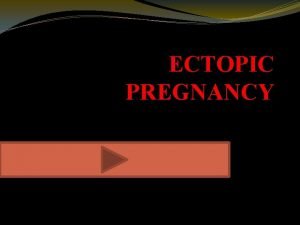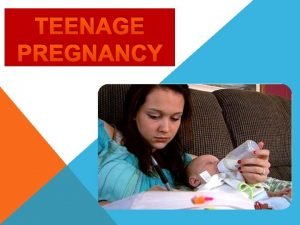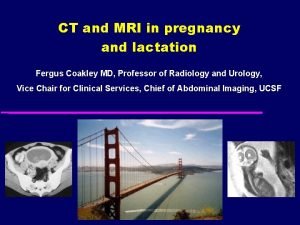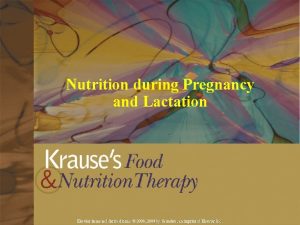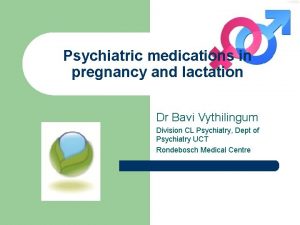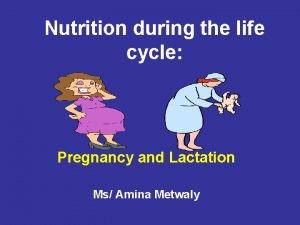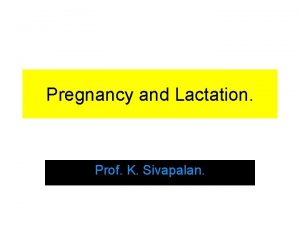Pregnancy Development and Lactation Chapter 18 Species Development
































































- Slides: 64

Pregnancy, Development and Lactation Chapter 18

Species Development • Species can only be perpetuated if pregnancy, development of offspring and lactation are appropriately carried out.

Fertilization • Copulation- the act of breeding allowed by the female during estrous (heat) period. – Usually in a mounted position • Intromission- the insertion of the penis into the vagina. • Ejaculation- when the semen is deposited in the upper portion of the vagina – Horse and pig deposit semen directly into uterus through open cervix.

Transport of Spermatozoa • Start actively swimming as soon as deposited trying to make their way to oviducts. – Would take over an hour under own power – Are helped out by uterine contractions • Copulation causes posterior pituitary gland to release oxytocin which causes smooth muscle of reproductive tract to contract helping spermatozoa to the ovum.

Capacitation • Series of changes that spermatozoa undergo in the female reproductive tract to increase chances of fertilization. – Changes of ion movement through cell membranes – Increase in cell’s metabolic rates – Increase in rate of use of simple sugars for energy production. – Allows acrosome enzymes to be released.

Fertilization of the Ovum • Spermatozoa are programmed to seek out something large and round attempt to penetrate it. – Some try to fertilize non-ovum things. • Once ovum is found, many spermatozoa may swarm around it and start tunneling through the layers. – Process aided by enzymes of acrosome. • Once one spermatozoa penetrates ovum, change in membrane prevents any other sperm from entering.


The Zygote • Once ovum is fertilized, it becomes a zygote. • Male pronucleus- the nucleus of the male spermatozoan immediately after fertilization. • Female pronucleus- the nucleus of the ovum immediately after fertilization. – Each pronucleus carries haploid number – Join together to get diploid number • This joining establishes genetic information for offspring.


Cleavage • The rapid division of the zygote once single nucleus has been established. • Cell divides rapidly but overall size remains the same because are dividing so quickly do not have time to grow. • Once zygote is a solid mass of cells, is in morula stage. • During this time, zygote is moving down ovum to uterus – Propelled by cilia and muscular contractions

Blastocyst • Cells of morula stage continued to divide and hollow cavity is formed in center of zygotic cell. • Once bump of cells on one side is developed, this is now the blastocyst.


Implantation • The means by which the blastocyst makes itself a home by attaching itself to the lining of the uterus (endometrium). • Once blastocyst comes to rest beside uterine lining, enzymes produced by blastocyst dissolve away some lining and implants itself into this pit in the lining. • Placenta begins to form as soon as implantation occurs. – Way of transporting oxygen and nutrients to blastocyst.


Terminology • Embryo-what developing offspring is referred to during early part of pregnancy. • Fetus- What developing offspring is referred to during later part of pregnancy.

The Placenta • Life-support system of the developing fetus. • Fetus is a parasite on mother during pregnancy. • Grows along with fetus to enable for appropriate transfer of waste products, etc.

Structure of the Placenta • Multi-layered, fluid-filled membranous sac. • Develops around embryo and is connected to it by umbilical cord. – Smaller connections between outermost layer of placenta and lining of uterus. • This is where exchange of nutrients and wastes takes place. • Fetal and maternal blood does not mix but runs in close proximity to one another.

Structure of Placenta Continued… • 3 layers of placenta – 1. Amnion • Forms amniotic sac directly around fetus – 2. Allantois • Outside amniotic sac and forms allantoic sac. – 3. Chorion • Outside of allantoic sac and attaches to uterine lining. • Linked to fetus by umbilical cord.



The umbilical cord • Link between the fetus and nutrient and waste exchange structures of the placenta. • Cordlike in structure – Contains umbilical arteries (2) and umbilical vein. • Umbilical arteries carry unoxygenated, waste filled blood from fetus to placenta • Umbilical vein carries nutrient and oxygen rich blood back from placenta to fetus. – Contains drainage tube from fetus’ urinary bladder (urachus) • Tube runs from the cranial tip of fetus’ bladder through umbilical cord to allantoic sac. • Fetus does not produce urine but do produce fluid that must be eliminated.



Attachment to the Uterus • Where chorion attaches to lining of the uterus. • Type of attachement varies among species and is one of four types: – 1. Diffuse Attachment – 2. Cotyledonary Attachment – 3. Zonary Attachment – 4. Discoid Attachment.


Diffuse Attachment • Means that attachment sites are spread diffusely over the whole surface of the placenta and the whole lining of the uterus. • No small, limited areas of attachment. • Found in pigs and horses • Detaches easily from uterine lining and is passed after the delivery of the newborn.

Cotyledonary Attachment • Most complicated type and is somewhat opposite of diffuse attachment. • Areas of attachment are small, separate, and numerous. • Placentome- attachment sites. • Cotyledon- area on surface of the placenta • Caruncle-area on surface of uterus (mushroom-like). – Cotyledon and caruncle interdigitate with one another. • Each placentome must separate completely for placenta to pass after birth. – If not completely passed, may be retained and can cause other problems.


Zonary Attachment • Placenta attaches to the uterus in beltshaped area that encircles the placenta. • Found in dogs and cats • Detaches easily after delivery.


Discoid Attachment • Area of attachment between placenta and uterus is a single-disk shaped area. • Found in humans and other primates

Pregnancy • Also called gestation period • Time from implantation to delivery of the newborn. • Judge time by time since fertlization. • Is divided into three segments called trimesters – 1 st- period of the embryo implanting and organizing and placental development – 2 nd- embryo now called fetus and is fetal development period. Parts are taking shape and differentiating. – 3 rd- fetal growth. All parts grow dramatically



Gestation Periods Species • Cat • Dog • Cow • Elephant • Ferret • Goat, Sheep • Hamster • Horse • Human • Pig • Rabbit Approx Gestation Period 2 mo (56 -69 days) 2 mo (59 -68 days) 9 mo (271 -291 days) 21 mo (615 -650 days) 6 w (42 days) 5 mo (143 -155 days) 3 w (19 -20 days) 11 mo (321 -346 days) 9 mo (280 days) 3 mo, 3 w, 3 d (110 -116 days) 1 mo (30 -32 days)

Parturition • • Birth process Lungs of newborn become functional Goes from parasite to independent being. Parturition is triggered by size and weight of uterus and changing hormone levels. – Progesterone of dam declines – Progesterone has kept myometrium from contracting – Increased levels of glucocorticoid hormones stimulate rise in estrogen levels – These increase sensitivity to oxytocin, released from posterior pituitary gland. • Oxytocin stimulates contractions which starts labor process


3 Stages of Labor • 1. Uterine Contractions – Presses fetus against uterus – Causes cervix to gradually dilate – Dam may appear restless in this stage. • 2. Delivery of the Newborn – Combination of uterine and abdominal muscle contractions – “Water” or amniotic and allantoic sacs rupture. • 3. Delivery of the placenta – Placenta separates from wall of the uterus and is expelled by uterine contractions. – Dam often eats the placenta.

Labor Continued • Multiparous animals: the second and third stages of parturition intermix with one another. – Newborn and placenta are delivered alternatively. – Next newborn will not be delivered typically until previous placenta has been expelled.

Parturition: normal presentation

Dystocia • “difficult birth” • Most common cause is that fetus is too large to pass or is in wrong orientation for delivery. • May have to Repell the fetus or deliver through Cesarean section. • If fetus is dead, may have to be removed in segments- called Embryotomy.

Parturition: abnormal presentations

Delivery

Placental Delivery

Whelping/ Parturition Normal Presentation of two sacs

Involution of the Uterus • After parturition is complete, uterus gradually returns to nonpregnant size. • Process is called involution. • At placental attachment sites, endometrium sloughs into uterus and areas heal over. • Myometrium contractions continue slowly, pushing contents through birth canal. • Will pass from bright red blood, to dead tissue over course of weeks to about a month.

Mammary Glands and Lactation • Play an important role during neonatal period. • Mammary glands are specialized skin glands. • Produce colostrum and milk which are crucial to early life. • Present in both males and females – Females secrete appropriate hormones for them to become functional


Species Differences • Number, size and location varies from animal to animal. • Cattle, sheep and goats only have one opening per teat • Dogs have up to 20 openings per nipple.

Number of Mammary Glands for Common animals SPECIES Cats Horses NUMBER OF GLANDS 10 2 Dogs Humans 10 2 Cattle Pigs 4 14

Udder of the Cow • Udder is term used for mammary glands. • Exaggerated in size, but composition is similar to other animal’s mammary glands • Four mammary glands (quarters) • Quarters are completely separate units from each other • Each quarter has its own milk-secreting systems and ducts leading down to separate teats • Suspended by strong suspensory ligaments that allow it to stretch. – Acts as a shock absorber.


Udder Continued • Mastitis- infection of the mammary gland – Since are separate, is unlikely to spread from one quarter to another. – Can spread through bloodstream.

Alveoli and Duct System • Alveoli- milk-secreting units of the mammary gland • Alveolar duct- alveoli secrete milk into tube – Similar in make up to Alveoli found in lungs. • Ducts empty into large space called gland sinus which is continuous with the teat sinus which is where milk is extracted by suckling young. • Tip of teat has streak canal- passageway from teat sinus to outside. – Surrounded by elastic fibers and ringlike sphincter muscle that keeps it closed to prevent leakage.



Mammary Gland Development • Mammary glands develop in response to hormones produced at puberty – Prolactin and Growth Hormone directly encourage mammary gland development – Estrogen and progesterone encourage mammary alveoli and duct systems to develop • Influenced by FSH and LH on ovaries – Certain drugs may inhibit normal mammary gland development

Lactation • Process of milk production • Begins at end of pregnancy and is obvious at time of parturition. • Prolactin and Growth Hormone from anterior pituitary gland hormones from adrenal cortex are involved with the starting of lactation.


Colostrum • “First milk” or “premilk”. • Contains large amounts of proteins, lipids, and amino acids than milk and high levels of essential vitamins. – Antibodies for defense • Supplies important nutrients and defenses that newborn can not receive elsewhere. – If does not receive within first few hours, body can no longer process appropriately. • Has laxative effect to clear meconium ( first feces) from newborn’s intestinal tract. • Involved with passive immunity from dam to newborn • Those without appropriate colostrum tend to be weaker and do not grow as rapidly. • Why we wait for vaccines.

Maintenance and Lactation • Lactation continues as long as mammary gland is emptied regularly. • Physical stimulation of nipple. • This sends nerve impulses to brain which continues stimulation of appropriate hormones for milk production. • When nursing stops, signal stops. – Will lead to involution of the mammary gland or “drying up”.


Milk Letdown • Immediate effect of nursing or milking • Milk accumulates high up in mammary gland in alveoli and small ducts and does not move down until Milk letdown occurs. • Oxytocin causes myoepithelial cells around the alveoli and small ducts to contract – Squeezes milk down the large ducts and sinuses. – Can take from few seconds to minute for milk to flow freely.

 Lactation without pregnancy pictures
Lactation without pregnancy pictures Early pregnancy pictures of spotting during pregnancy
Early pregnancy pictures of spotting during pregnancy Define keystone species in biology
Define keystone species in biology Drugs for lactation
Drugs for lactation Lactation physiology
Lactation physiology United states lactation consultant association
United states lactation consultant association Ps12q
Ps12q Lactation
Lactation Lactation
Lactation Pictures of pyometra in dogs
Pictures of pyometra in dogs Singulair buy online
Singulair buy online Lactation curve
Lactation curve Difference between tetanus and tetany
Difference between tetanus and tetany Trimester graphic organizer
Trimester graphic organizer Trimester graphic organizer
Trimester graphic organizer Chapter 20 reproduction and pregnancy
Chapter 20 reproduction and pregnancy Chapter 13 anatomy and physiology of pregnancy
Chapter 13 anatomy and physiology of pregnancy Prenatal care and adaptations to pregnancy
Prenatal care and adaptations to pregnancy Chapter 4 prenatal care and adaptations to pregnancy
Chapter 4 prenatal care and adaptations to pregnancy Unit 6 human development lesson 1 pregnancy
Unit 6 human development lesson 1 pregnancy Chapter 5 reproducible master a pregnancy vocabulary
Chapter 5 reproducible master a pregnancy vocabulary What is visitor pre registration in picme
What is visitor pre registration in picme Habitats niches and species interactions
Habitats niches and species interactions Budd-chiari syndrome triad
Budd-chiari syndrome triad Pregnancy childbirth and the puerperium icd-10
Pregnancy childbirth and the puerperium icd-10 Adoloscense
Adoloscense Do pregnancy cramps feel like period cramps
Do pregnancy cramps feel like period cramps Origin of species chapter 24
Origin of species chapter 24 Chapter 24 the origin of species
Chapter 24 the origin of species The origin of species scan 22
The origin of species scan 22 Evolusi weismann
Evolusi weismann The origin of species chapter 24
The origin of species chapter 24 Temporal isolation
Temporal isolation The origin of species chapter 24
The origin of species chapter 24 Gradual speciation
Gradual speciation Pregnancy declaration
Pregnancy declaration Sheep pregnancy toxemia
Sheep pregnancy toxemia Hegar sign
Hegar sign Astelazine
Astelazine Complications of hypothyroidism
Complications of hypothyroidism Direct coombs test pregnancy
Direct coombs test pregnancy Nursing theories related to teenage pregnancy
Nursing theories related to teenage pregnancy For teen
For teen Folic acid dose in pregnancy
Folic acid dose in pregnancy Female reproductive system pregnancy
Female reproductive system pregnancy Anemia in pregnancy guideline
Anemia in pregnancy guideline Early pregnancy factor
Early pregnancy factor Medicolegal importance of pregnancy
Medicolegal importance of pregnancy Hormone levels during pregnancy
Hormone levels during pregnancy Ballottement
Ballottement Cervix score
Cervix score Post dated pregnancy complications
Post dated pregnancy complications Pregnancy category a
Pregnancy category a Normal pregnancy definition
Normal pregnancy definition Bilirubin chart
Bilirubin chart Side effects of magnesium sulfate in pregnancy
Side effects of magnesium sulfate in pregnancy Lack of knowledge in teenage pregnancy
Lack of knowledge in teenage pregnancy Aflp in pregnancy
Aflp in pregnancy 1 week darkening areola early pregnancy pictures
1 week darkening areola early pregnancy pictures 1 week darkening areola early pregnancy pictures
1 week darkening areola early pregnancy pictures Inj haemaccel uses
Inj haemaccel uses Pregnancy
Pregnancy Whats a husband stitch
Whats a husband stitch Hypothyroidism pregnancy
Hypothyroidism pregnancy Awuta
Awuta
